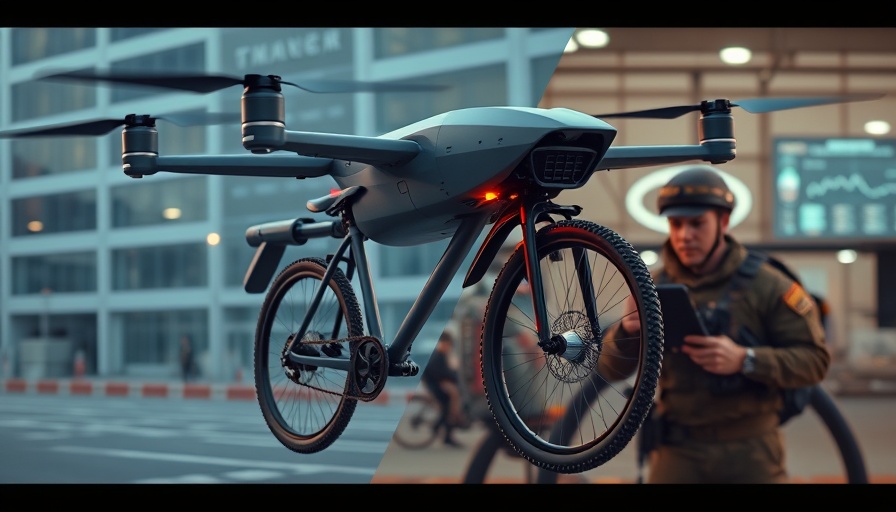
Drone Innovations on the Frontlines: A Remarkable Rescue
In a striking display of innovation and resolve, the "Syla Svobody" (Force of Freedom) battalion of Ukraine's National Guard recently completed a unique operation. Utilizing a heavy drone, they delivered an electric bike to a wounded soldier, affectionately known as "Tankist," who was trapped behind enemy lines during a Russian assault.
This operation exemplifies not only the adaptability of military units in crisis but also the burgeoning role of drone technology in combat scenarios. The video released on July 30, showcasing this remarkable event, has captured the attention of both military and tech enthusiasts alike, highlighting a novel approach to battlefield assistance.
Revolutionizing Combat Logistics
The deployment of drones in military operations isn't merely a tactical advantage; it's a new frontier in logistics. The mission began when Tankist remained isolated in a besieged position, unable to evacuate due to injuries and the surrounding threats, including the use of chemical weapons by enemy forces. The next closest friendly units were nearly 1.5 kilometers away, making traditional rescue impossible under the circumstances.
After two failed attempts due to system malfunctions and enemy engagement, the battalion succeeded on the third try, delivering the bike effectively. This innovation shows how drone technology has transformed military support operations, providing timely solutions that can save lives. In recent conflicts, drones have been used for surveillance and supply deliveries, but this specific use-case shows the technology's potential reach, blending logistics with tactical strikes.
Human Courage in the Face of Adversity
What stands out in this narrative is not just the operational success but the human element—Tankist’s resilience under fire. Despite being outnumbered and facing lethal conditions, his refusal to abandon his post serves as a testament to the bravery exhibited by many soldiers. His experience underscores the importance of morale and camaraderie in combat, where technology alone cannot replace the human spirit.
After successfully receiving the electric bike, Tankist set out toward friendly lines, encountering a landmine but thankfully escaping with minor injuries. He was swiftly evacuated by infantry forces, demonstrating that even amidst technological advancement, the core values of human bravery and teamwork remain vital.
The Implications for Future Military Technologies
As we reflect on this event, it's worth considering the implications for future military technologies. Drones continue to evolve, and as their capabilities expand, we could see even more innovative uses—perhaps in delivering critical supplies or enhancing situational awareness on the field without putting lives at immediate risk.
Technological advancements in drone capabilities could lead to improvements in efficiency and speed in military operations. The ability to deliver resources directly to those in need can change the dynamics of supply chains, especially in chaotic environments like warzones. Analysts suggest future iterations might incorporate even more sophisticated navigation systems that can evade and counteract enemy defenses.
Conclusion: A New Era of Warfare
The recent drone delivery of an electric bike to Tankist is a microcosm of larger shifts in military strategies and technologies. Innovations like this are not just fascinating; they have the potential to redefine how wars are fought, how logistics are planned, and most importantly, how lives are saved.
As we observe the evolution of battlefield technologies, the interplay between human courage and technological advancement continues to shape our understanding of modern warfare. It is stories like this that remind us of the resilience of the human spirit, even in the most technologically advanced settings.
 Add Row
Add Row  Add
Add 




Write A Comment